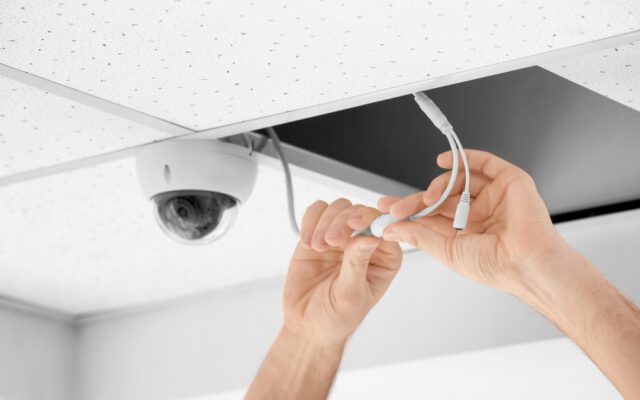
Let’s talk about wires as an essential element of video surveillance
Let’s talk about wires as an essential element of video surveillance
The transition from analog to digital video surveillance is still ongoing. And until now, the issue of effective signal transmission has been extremely acute.
In this article, we’ll break down the pros and cons of wireless and wired technology. And also, we’ll talk separately about the cable for video surveillance.
Classic installation mistakes
If you settled on wired video surveillance, then the correct installation of the system is critical. You must avoid the following mistakes:
- ignoring the corrugation for wires or using inappropriate protection for outdoor and indoor video monitoring;
- laying too long cable spans. The optimal cable length for a CCTV camera is up to 300 meters. If you run the cable further, the video signal will be uneven;
- avoiding junction boxes. Failure to hide the connectors will result in oxidation, interference, and rapid system failure.
And you can find out more installation errors in the article: “How to kill a video surveillance system during installation? 6 common mistakes ”.
The subtleties of the coaxial cable
In analog monitoring, a coaxial cable for video surveillance is used for stable signal transmission. It works up to 250 meters, and it is connected with a double 18/2 wire.
If you need to transfer data over longer distances, you need to choose a power source and cable that maintain an optimal voltage level. This is a difficult task.
Therefore, with the advent of IP cameras, coaxial cables began to leave the market.
Ethernet / IP technology
IP devices for video surveillance are connected to the network via a Cat-5/UTP cable or an Ethernet connection. Many monitoring kits already have wires and the necessary protocols for work, so it is straightforward to set up the system.
IP cameras and video servers work with embedded web servers. This makes it possible to operate the system via the Internet and a regular browser online. Here the need for additional equipment disappears: you do not need video recorders, hard drives, and so on. Find out how much you can save on digital video surveillance here.
Optical fiber advantages
Optical fiber is capable of transmitting data using light as a signal carrier. The main advantages of fiber optic technology are:
- high-quality transmission;
- low weight;
- long service life;
- stable operation over long distances and at a high-temperature range;
- a high level of protection against unauthorized connection and interference with the system from the outside;
- high throughput (45 times more than Cat-5 cable);
- increased system protection against overvoltage, short circuits, lightning strikes, and interference.
Optical fiber is ideal for large objects and long-distance communication. But this powered CCTV cable needs a specific camera. How to choose it, read in our article: “How to choose an outdoor long-range video camera?”.

Simple solution without cable from Faceter
Although wires have been an effective method of transferring information, the IT-sphere is developing extremely rapidly. There are more convenient IP cloud video systems today.
For example, the solution from Faceter. Cameras work via a Wi-Fi connection and transmit information in real-time to cloud storage. And from there, the operator monitors what is happening at the facility or reacts to notifications about alarming events.
Faceter is not just a camera; it is an intelligent system that sends data to any place on the planet.
Conclusion
Wires must be selected to suit each surveillance system. But it’s best to move away from the endless web of cables and move to the next level of video monitoring – to cloud IP servers.







